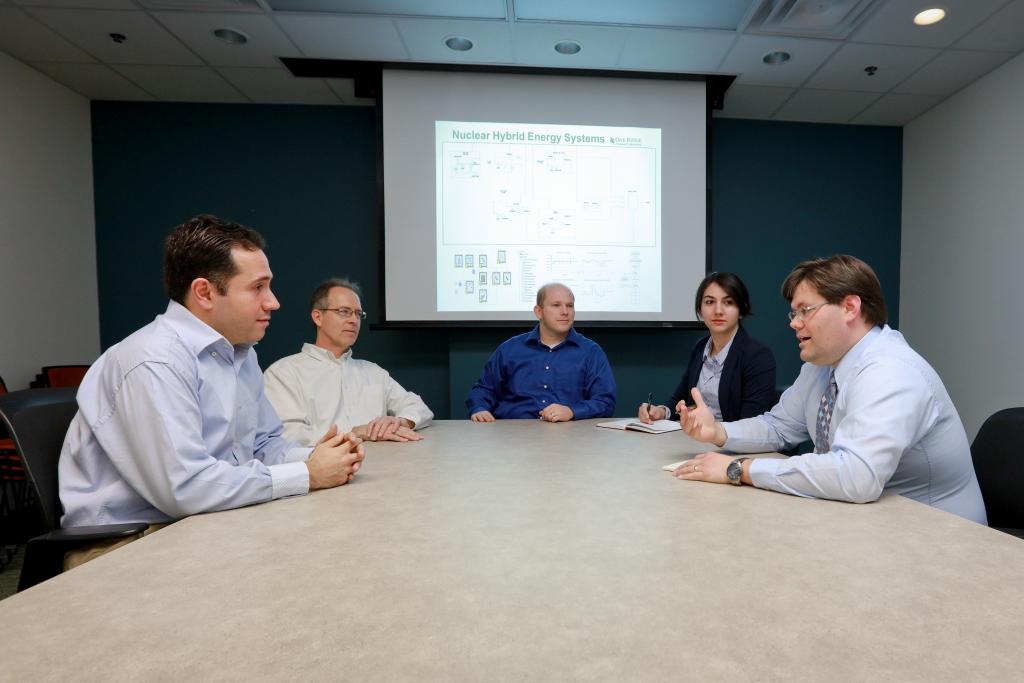Project Details

Problem Statement
Over the last decade, more intermittent renewable power has been added to the grid, leading to instabilities in the grid and price fluctuations in the electricity market. Nuclear reactors currently provides around 20% of the nation’s electricity as a reliable, dispatchable, baseload generator, but the market fluctuations have made nuclear power less economically attractive. Further, generating only electricity from nuclear power means using only around 33% of the energy produced. Nuclear hybrid energy systems (NHES) will integrate nuclear reactors with industrial facilities, energy storage technologies, and the grid to efficiently use thermal and electrical power, responding dynamically to the grid demand.
Technical Approach
The NHES program is developing integrated, dynamic, multi-physics models to analyze and optimize the physical and economic performance of the integrated systems. The multi-physics modeling effort uses Modelica to track mass and energy balances, with a goal of generating a modular system to include models of multiple reactor, industrial facility, and power storage and conversion technologies. The different technologies and system architectures can be tailored to different geographic regions and markets, such as hydrogen production or water purification. The model development includes individual facility instrumentation and control (I&C), as well as overall system supervisory I&C. Additionally, the NHES program is developing methods to analyze the integrated system reliability based on a probabilistic risk assessment (PRA) framework.
Benefit
The integrated NHES provides multiple benefits. The first is that the reactor can operate at steady state independent of the grid demand. The second is that more of the total energy can be used when coupled with a thermal energy customer. The third is that the integrated system can optimize its revenue stream based on the dynamic energy market, i.e., sell energy to the most favorable customer at any time. And finally, the dynamic response of the energy system allows greater renewable penetration on the grid while maintaining grid stability.
Sponsor
DOE Office of Nuclear Energy, Office of Advanced Reactor Deployment
Partners
Idaho National Laboratory
Argonne National Laboratory
Principal Investigator
T. Jay Harrison



